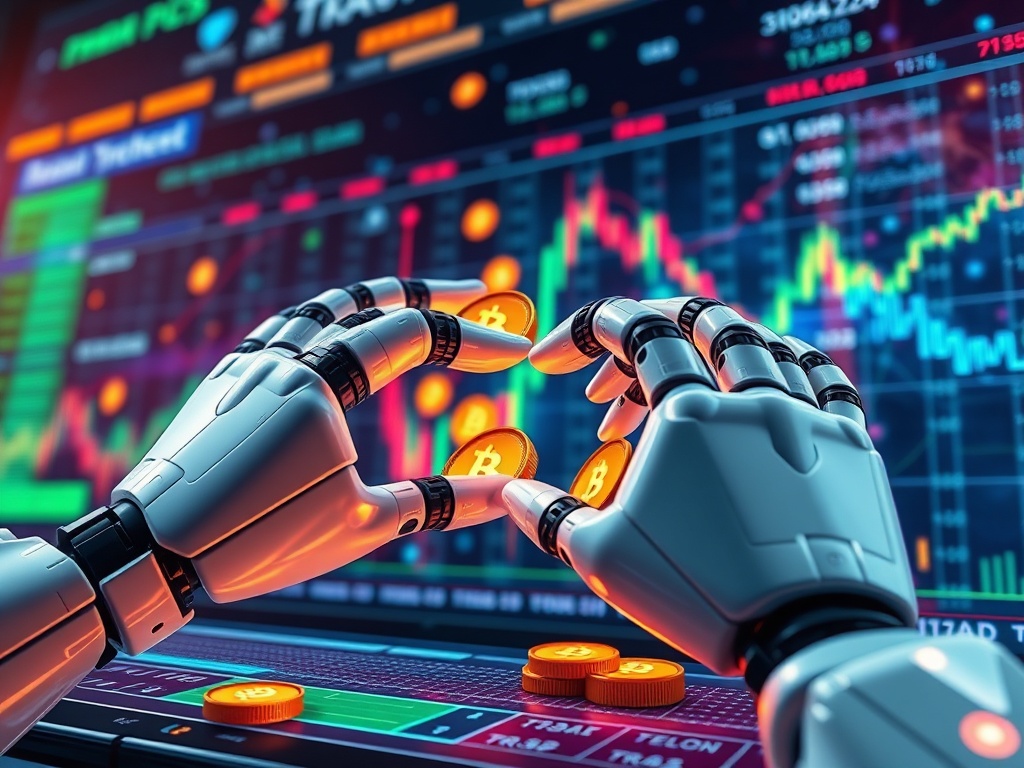Artificial intelligence (AI) is rapidly transforming industries across the world, and cryptocurrency trading is one of the most dynamic spaces feeling its impact. The combination of AI and digital assets is reshaping how investors analyze markets, make decisions, and manage risks. The role of AI in cryptocurrency trading is not only to enhance efficiency but also to revolutionize the way traders understand and interact with this fast-moving market.
In the early days of cryptocurrency, trading relied heavily on manual strategies and emotional decision-making. Today, however, AI-powered algorithms can analyze enormous amounts of data in real time, detect market trends, and execute trades within milliseconds. This evolution marks a new era for both experienced investors and newcomers seeking smarter and more informed trading strategies.
AI’s ability to process massive datasets and identify patterns that human traders may overlook has become a game-changer. From predicting price movements to optimizing portfolio management, AI is now at the center of innovation in crypto trading. But what exactly makes it so powerful, and what does the future hold for this partnership between artificial intelligence and decentralized finance?
How AI is Revolutionizing Cryptocurrency Trading
AI’s primary advantage in cryptocurrency trading lies in automation and data analysis. Traditional trading methods often depend on human intuition, which can be biased or inconsistent. By contrast, AI algorithms use machine learning to interpret historical data, detect anomalies, and generate insights based on real-time market behavior. This gives traders a powerful edge in identifying profitable opportunities before the broader market reacts.
Machine learning models can monitor thousands of trading pairs simultaneously and recognize subtle price patterns that indicate potential breakouts or corrections. Moreover, natural language processing (NLP) allows AI systems to scan global news, social media sentiment, and blockchain data to assess the overall market mood. This helps traders anticipate sudden changes in investor confidence and adjust their strategies accordingly.
As a result, traders using AI tools can reduce emotional bias, react faster to volatility, and implement complex strategies with minimal manual intervention. This makes AI-driven trading not just more efficient but also more consistent and adaptive to the unpredictable nature of cryptocurrency markets.
Predictive Analytics and Market Forecasting
One of the most exciting applications of AI in cryptocurrency trading is predictive analytics. By studying historical price trends, transaction volumes, and blockchain metrics, AI systems can forecast potential price directions with impressive accuracy. Predictive models learn from past behaviors, making them increasingly reliable over time.
For example, an AI model may detect early signals of a bull run by identifying correlations between Bitcoin trading volume and network activity. Similarly, it can predict short-term corrections by analyzing liquidity shifts and market sentiment. These insights allow traders to position themselves advantageously before major market moves occur.
While no system can predict prices with absolute certainty, AI enhances traders’ ability to make informed decisions and manage risk effectively. This is particularly important in the volatile crypto space, where prices can fluctuate dramatically within minutes.
Risk Management and Portfolio Optimization
Effective risk management is essential in cryptocurrency trading, and AI excels in this area. AI-powered systems continuously monitor portfolios and market conditions to assess exposure and suggest rebalancing strategies. This ensures that traders maintain an optimal mix of assets according to their risk tolerance and market outlook.
AI algorithms can also detect irregular market behaviors that might indicate manipulation or large sell-offs, allowing traders to act quickly to protect their assets. Additionally, reinforcement learning — a branch of AI where models improve through experience — enables systems to refine strategies based on real-world performance, becoming smarter and more effective over time.
For institutional investors, AI-driven portfolio management tools offer scalability and precision that human analysts alone cannot match. They provide real-time risk assessment, helping investors maintain a balanced approach even during market turbulence.
The Rise of Algorithmic and High-Frequency Trading
Algorithmic trading, powered by AI, has gained significant traction in cryptocurrency markets. These algorithms execute trades at speeds impossible for humans, capitalizing on tiny price differences across exchanges. High-frequency trading (HFT) in crypto uses AI to make thousands of trades per second, each aiming for small profits that accumulate over time.
AI’s ability to adapt to market conditions in real time ensures that these algorithms remain effective even in volatile environments. Moreover, deep learning techniques enable AI systems to identify arbitrage opportunities — situations where a cryptocurrency’s price differs between exchanges — and execute instant trades to exploit the gap.
Although algorithmic trading is not new, the integration of AI has made it far more sophisticated. It allows for continuous self-improvement and real-time adaptation, helping traders stay competitive in an increasingly complex marketplace.
Challenges and Ethical Considerations
Despite its advantages, the growing use of AI in cryptocurrency trading raises important challenges. Market manipulation, data privacy, and transparency are significant concerns. Since AI systems operate autonomously, their decisions can be difficult to audit or explain — a phenomenon known as the “black box” problem.
Additionally, the widespread adoption of AI-driven trading could lead to market homogenization, where many algorithms react to the same signals simultaneously, amplifying volatility. Regulators are still catching up with these rapid technological changes, making it essential for developers and traders to adopt ethical standards and transparency measures.
Security is another critical factor. AI systems require access to sensitive financial data, which makes them potential targets for cyberattacks. Ensuring that these systems are robust and well-protected is vital to maintaining trust in AI-driven financial technology.
The Future of AI in Cryptocurrency Trading
The future of AI in cryptocurrency trading looks exceptionally promising. As AI models become more advanced and blockchain data becomes richer, predictive accuracy will continue to improve. The integration of AI with decentralized finance (DeFi) platforms will open new opportunities for automated lending, yield farming, and risk assessment.
Moreover, the rise of quantum computing could further enhance AI capabilities, allowing for even faster data processing and decision-making. However, as technology evolves, maintaining regulatory compliance, data integrity, and ethical use of AI will remain key challenges.
In the coming years, we can expect AI-driven tools to become more accessible to retail traders, not just institutions. User-friendly platforms powered by AI will help individuals analyze trends, manage portfolios, and execute trades intelligently. This democratization of AI technology could lead to a more inclusive and efficient crypto trading ecosystem.

In Summary: The Role of AI in Cryptocurrency Trading
AI is fundamentally transforming the world of cryptocurrency trading. Its ability to process vast amounts of data, learn from patterns, and make rapid decisions is empowering traders to navigate complex markets with greater confidence and precision. While challenges related to ethics, security, and regulation persist, the benefits of AI integration are undeniable.
The role of AI in cryptocurrency trading will only grow as technology advances. For traders, investors, and developers alike, embracing AI means not just staying ahead of the curve but also shaping the future of a more intelligent, transparent, and efficient digital economy.



